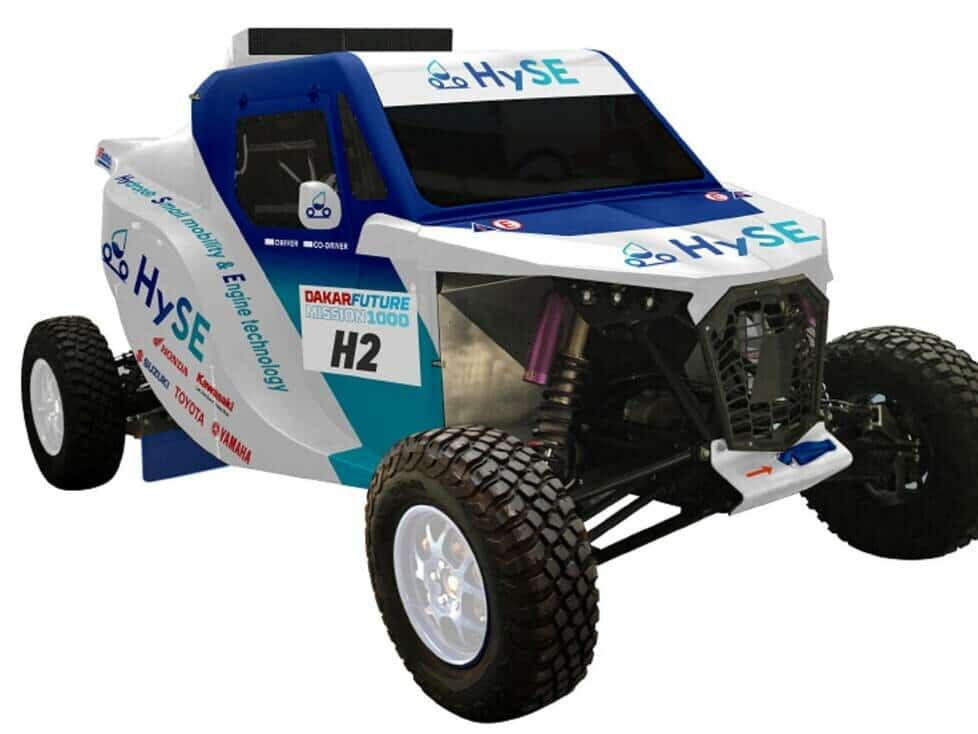Vehicles with experimental drive systems, including hydrogen, will compete in their own class – one project is a collaboration between the major Japanese brands
The 2024 Dakar Rally in Saudi Arabia will feature a new category to test alternative drive systems. This is the “Mission 1,000”. In principle, it is not a sporting competition, but the intention is to carry out tests under real competitive conditions.
Three types of drive are permitted in the Mission 1,000: fully electric, hydrogen or hybrid. Six motorcycles, four cars and one truck have registered. In addition to the actual rally, the Mission 1,000 vehicles will cover 100 kilometers each day.
If you complete the entire 100 kilometers, you receive 100 points. If only half the distance is completed, then only 50 points are added to the account. Bonus points are awarded for driving style. If you are ten percent faster than the reference time, you get ten points.
There are also acceleration races over 100 meters from a standing start. The fastest vehicle in the motorcycle and car categories receives ten bonus points. Fans can also vote for their favorite twice via social media. Five bonus points are awarded for this.
Three brands are represented in the motorcycle field: Tacita, Arctic Leopard and Zero. The Italian company Tacita has been working on the electric motorcycle since 2012. It should have a nominal range of around 200 kilometers.
Arctic Leopard is a Chinese brand. This electric motorcycle should be able to cover around 150 kilometers. While Tacita is sending two motorcycles into the race, Arctic Leopard is sending three. The Green Power team has an electric motorcycle from Zero, a US company.
Among the cars, the focus is on SSV vehicles. Jean-Michel Paulhe has equipped a Can-Am with a hybrid engine. The combustion engine is powered by bioethanol. The electric motor should reduce the CO2 footprint by up to 90 percent.
An SSV project with the code name HySE-X1 is also interesting. This is a hydrogen-powered vehicle. It is a joint research project between the Japanese brands Toyota, Honda, Kawasaki, Suzuki and Yamaha.
Jean-Marc Fortin’s Overdrive team is responsible for the mechanical parts of this side-by-side. The driver is Jamie Campbell. Camelia Liparoti drives another SSV with hydrogen drive. This project was created in the USA by George La Monte.
Apart from these three SSVs, there is also a conventional car. The Dutch company E-Lions has converted a VW Amarok with a hydrogen drive. Dick Zuurmond drives the car. Team manager Simon Koetsier is his co-driver
And then there is the truck of Jordi Juvanteny and Jose Luis Criado. Juvanteny has only missed one Dakar since 1991. Criado is about to take part in his 32nd. Nobody has contested more Dakars than the Catalan, who is a notary in his day job.
For the second year in a row, they are competing with an Epsilon MAN 6×6. This truck has a hydrogen-diesel drive system. Last year, Juvanteny, Criado and mechanic Jordi Ballbe completed the entire distance. However, they had to drive outside the truck classification.
This time, Xavier Ribas is the mechanic. He collects data for the development company EVARM and monitors the drive. Although the truck’s engine has six cylinders and around 800 hp, the special system can save up to 80 percent diesel





